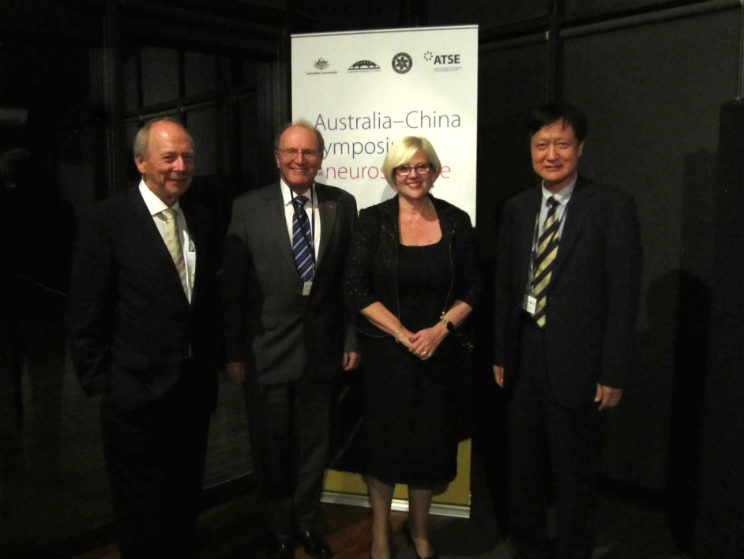Some of Australia’s and China’s leading neuroscientists met in Melbourne recently to share the latest research on neurodegenerative diseases and mental illness as well as better ways to study the brain.
The Australia–China Symposium on Neuroscience was the 11th in a series of annual scientific symposiums held by the Academies. Scientists from both countries discussed their research on major brain disorders like epilepsy, Alzheimer’s disease and mental illness, along with potential treatments.
The symposium also included an update on the China Brain Project which is part of a global drive to develop new tools, like computer simulations, to understand the brain.
The event was supported by the Australian Government departments of Education and Training, and Industry, Innovation and Science, and organised by the Australian Academy of Science, the Australian Academy of Technology and Engineering (ATSE) and the Chinese Academy of Sciences (CAS).
The symposium’s steering committee included Professor Bob Williamson AO FAA, Professor Ingrid Scheffer AO FAA, Professor Perry Bartlett FAA, Professor Peter Gray FTSE and Professor Mike Manton FTSE.
Roundtable discussions highlighted challenges in both Australia and China with regard to data sharing, intellectual property, and lack of clear regulations related to the exchange of samples. Researchers from both countries expressed an interest in exchanging students in the area of clinical training. There are ongoing discussions about possible joint projects in the areas of imaging and genetics, as well as biobanks.
In addition to representation from all three academies by presidents or vice-presidents, the Assistant Minister for Science, the Hon. Karen Andrews MP, and the Chief Scientist of Australia, Professor Ian Chubb, attended the symposium. Assistant Minister Andrews, who introduced herself as an engineer rather than as a politician, spoke positively about the future of science. She noted that the new Turnbull government was offering a high level of support for science, making innovation a centrepiece of government strategy. Professor Chubb spoke of his science, technology, engineering and mathematics (STEM) strategy in relation to education as well as international collaboration.
The symposium program also included site visits to Alzheimer’s Australia, the Florey Institute for Neuroscience and Mental Health, Monash Biomedical Imaging and the Australian Synchrotron.

© 2025 Australian Academy of Science